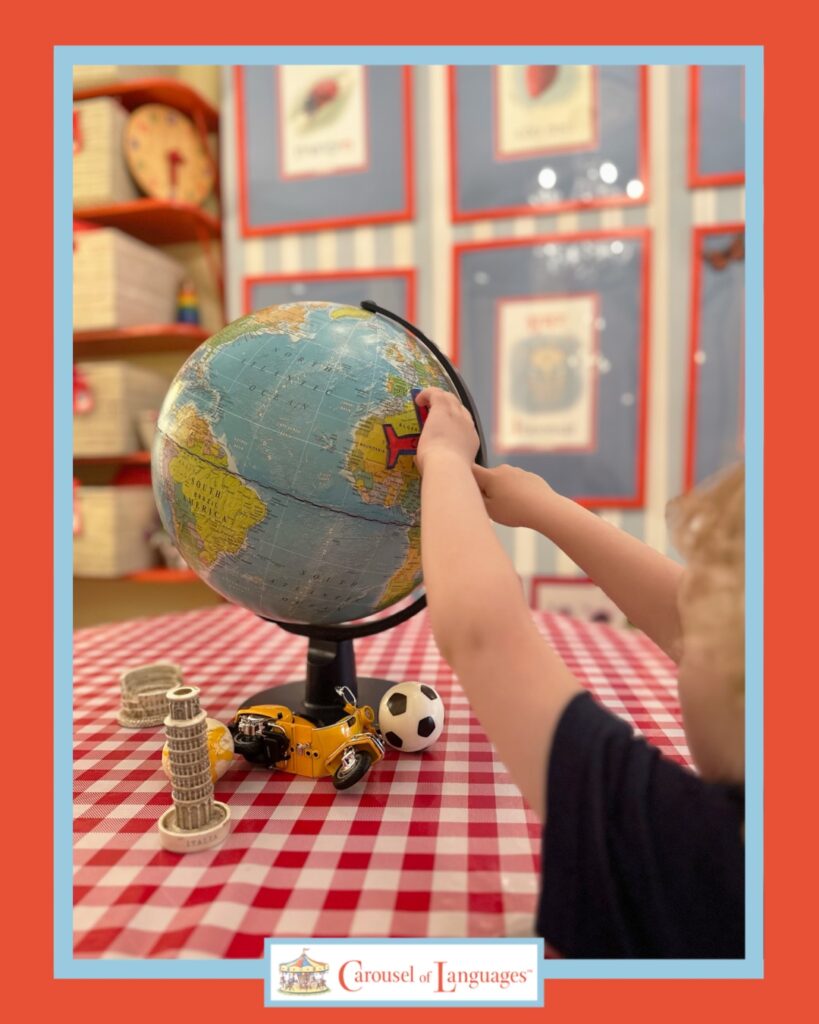Many parents today recognize the immense value of bilingualism and early foreign language exposure; they’re eager to give their children those advantages — but aren’t sure how and when to begin, or what to expect.
We’re pleased to bring you a 2-part article series answering your most pressing questions about early childhood foreign language learning and language development!
Part One will focus specifically on questions about foreign language learning — and Carousel’s unique program.
Part Two will explore more general questions about language acquisition in early childhood. Stay tuned!
⭐ ⭐ ⭐
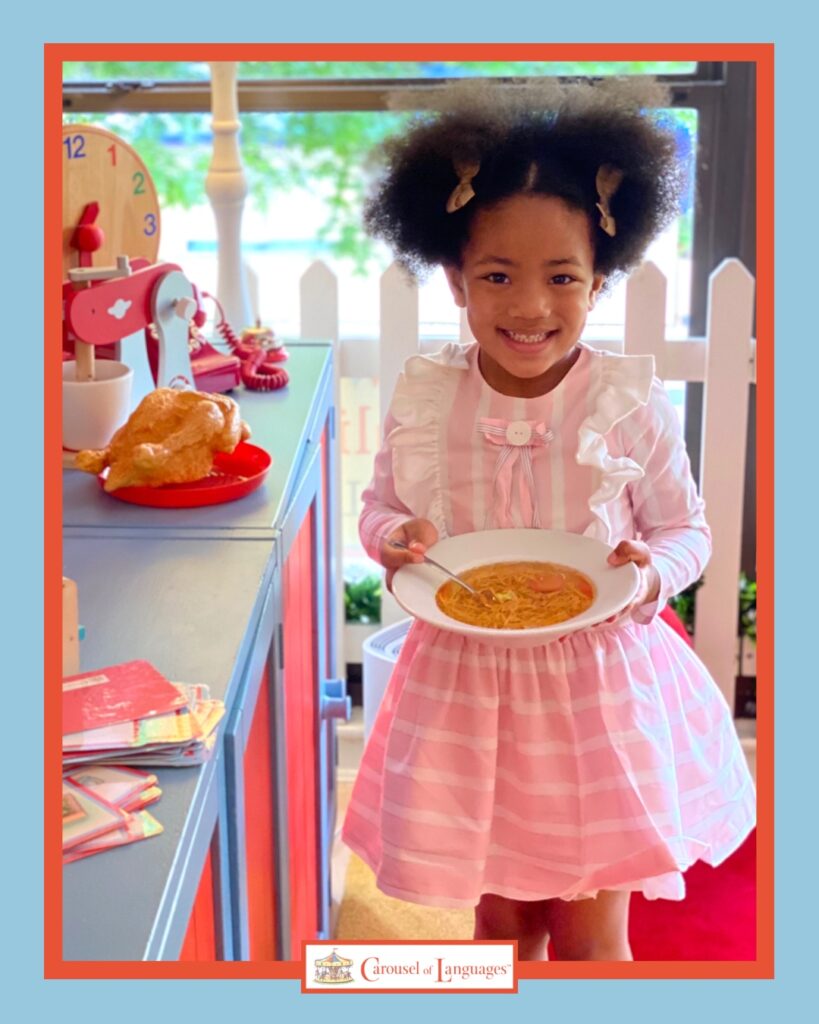
Carousel of Languages’ trusted early childhood foreign language program is backed by extensive research demonstrating that early exposure to a foreign language has immense cognitive and academic benefits.
In babies, it builds a more powerful brain by boosting synaptic connections — creating information pathways — and can have a profound positive impact on learning later on. Research has consistently found a positive link between foreign language study and academic achievement, including higher performance on standardized tests.
It’s important to start early! Foreign language exposure in infancy and toddlerhood bolsters listening skills and memory, increases and extends phonetic awareness, and enhances future literacy.
Carousel’s full-immersion program is designed for the particular needs and interests of infants, toddlers, and young children. We offer a wonderfully enriched, play-based, multisensory environment. A warm, playful, joyous, family-like learning atmosphere is a key component of our system.
Our philosophy and methodology are research-based and rooted in two decades of classroom success!
We are happy to answer any questions you may have about our program or early childhood foreign language education! Here are a few commonly asked questions:
⭐ ⭐ ⭐
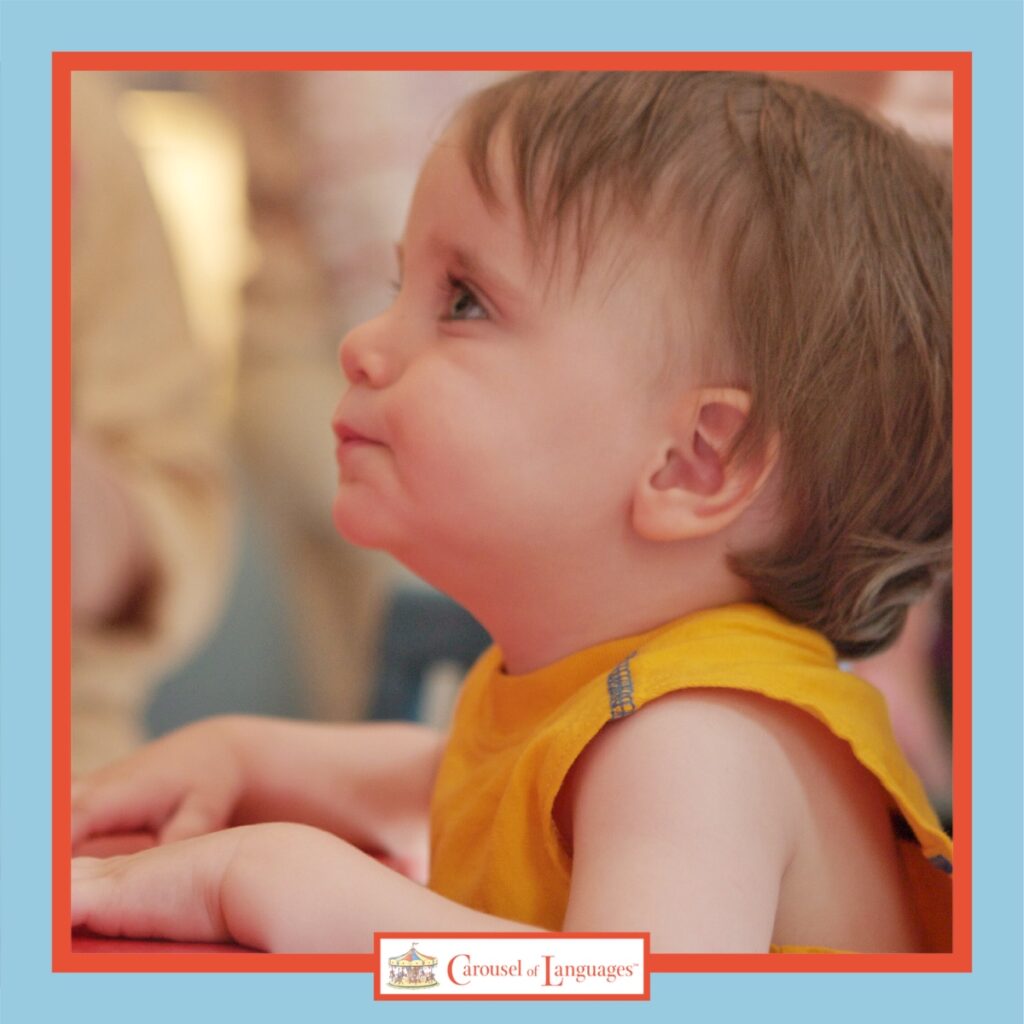
⭐ What is the best age to begin foreign language study? Should I really bring my newborn to language classes?
Age 6 months to 6 years is the optimal timeframe for beginning a second language.
This is the most sensitive period for language learning, especially the first 3 years. Exposure to a second language during this window produces the best possible outcomes for full, native-quality acquisition of a second language.
The infant brain is extraordinary! The first year of life is a window of unique language learning ability. In fact, babies from 0-12 months have a special gift of being able to distinguish all the sounds—about 800!—that make up all the languages in the world. For this reason, scientists call infants “citizens of the world.” By the end of their first year (starting around 10-11 months), children already begin to become “culture-bound listeners,” able to discern only the sounds of the language(s) they hear most often.
Children who receive early exposure to multiple languages can quickly and almost effortlessly acquire them simultaneously.
Young children can learn a second language the same way as they acquire their first language, as they don’t need to translate from their first language, as older children and adults do.
⭐ Won’t learning a second language confuse my child?
Nope! That’s a myth.
Contrary to commonly held fears and beliefs, introducing more than one language does not confuse young children or impede cognitive development, but rather, enhances early learning and promotes brain development.
Some parents worry when their young child begins code-switching — using two or more languages interchangeably — while learning another language. This is perfectly normal and does not indicate confusion! In fact, it’s a positive step that indicates your child is learning to think bilingually, and it reflects a sophisticated social understanding: children tend to code-switch around people they know can speak both languages. From a very young age, children know to choose the language that fits the speaker.
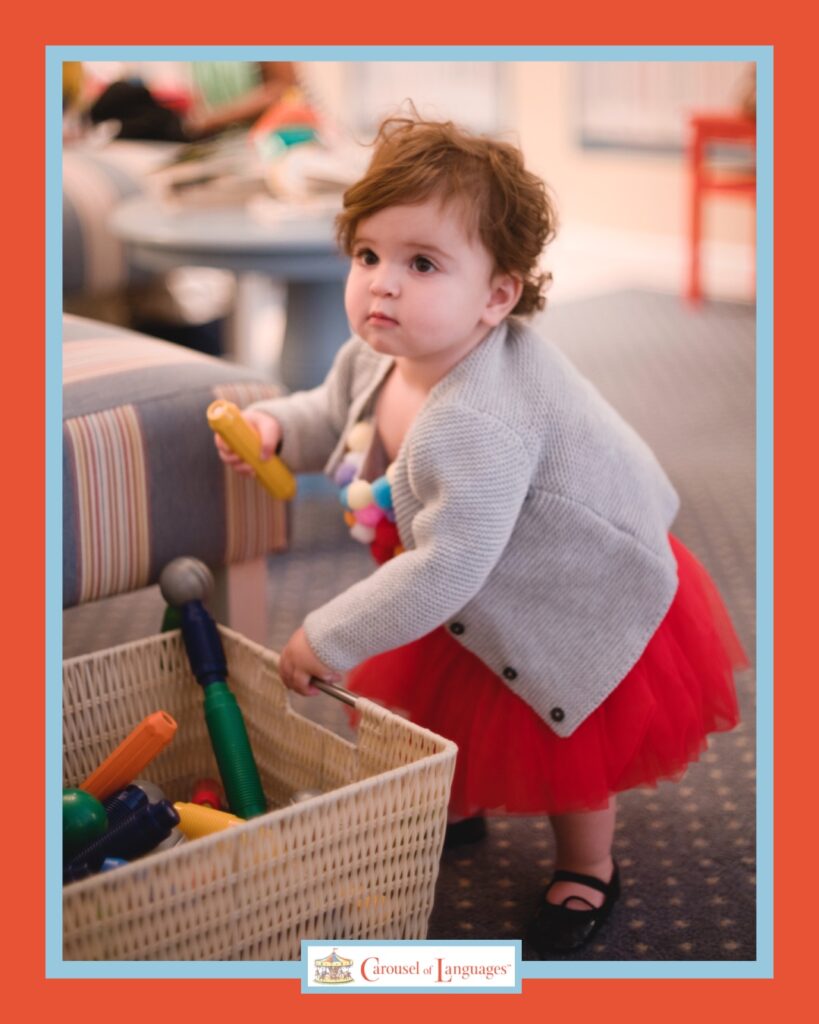
⭐ How will my child understand what is going on in an immersion class?
Teaching infants and toddlers is a very special skill. Our teachers come to us from esteemed education schools and bring a wide variety of specialties. But above all, we look for a genuine love of working with babies and young children, and of course, a passion for language education.
Our teachers use hand and body cues, facial signals, and tonal changes, as well as songs, stories, rhymes, games, movement, hands-on art projects, dramatic play, and countless fun activities to clearly convey meaning.
Young children are marvelously uninhibited while learning something new — they dive right in, mimic easily, and aren’t hesitant or afraid to make mistakes.
We encourage our young students to ask questions, use their voices, express their needs, thoughts, and feelings, move their bodies, try new things, touch and hold beautiful props, play, and discover our enchanting Carousel learning environment. Every detail of the space and each of our exquisite teaching materials is specifically designed to engage a young child.
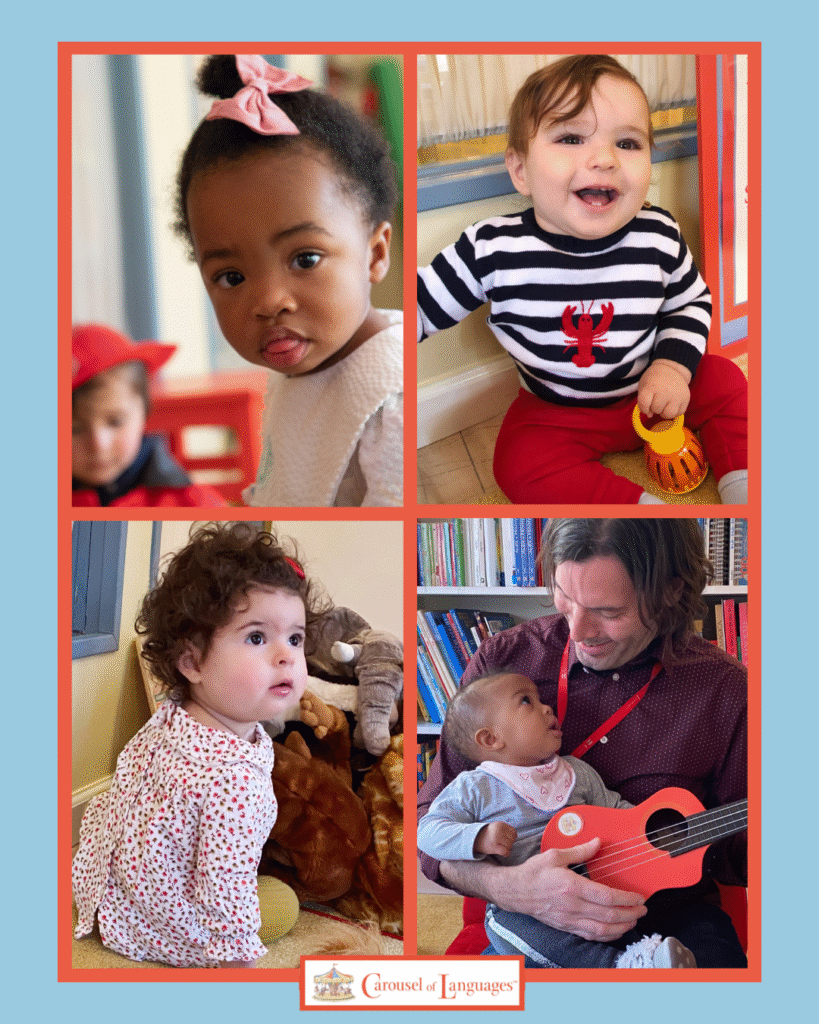
⭐ Can you really teach my infant or toddler a second language?
Infants and toddlers acquire language without effort or formal teaching. Children learn through interaction with adults and other children. They easily acquire two or more languages at the same time, as long as they are regularly interacting with speakers of those languages.
Research has shown that, for the very young child, social interaction is one of the most important factors in language learning and early literacy — cuddling together while reading, telling stories at the dinner table, singing and dancing, laughing, and playing. During the first year of life, when a baby’s brain is very pliable, these positive experiences physically mold and shape the developing brain.
(A child who simply hears language on the TV or radio but nowhere else will not learn to talk, and will not pick up a foreign language that way. We’ll dive deeper into this question in Part 2!)
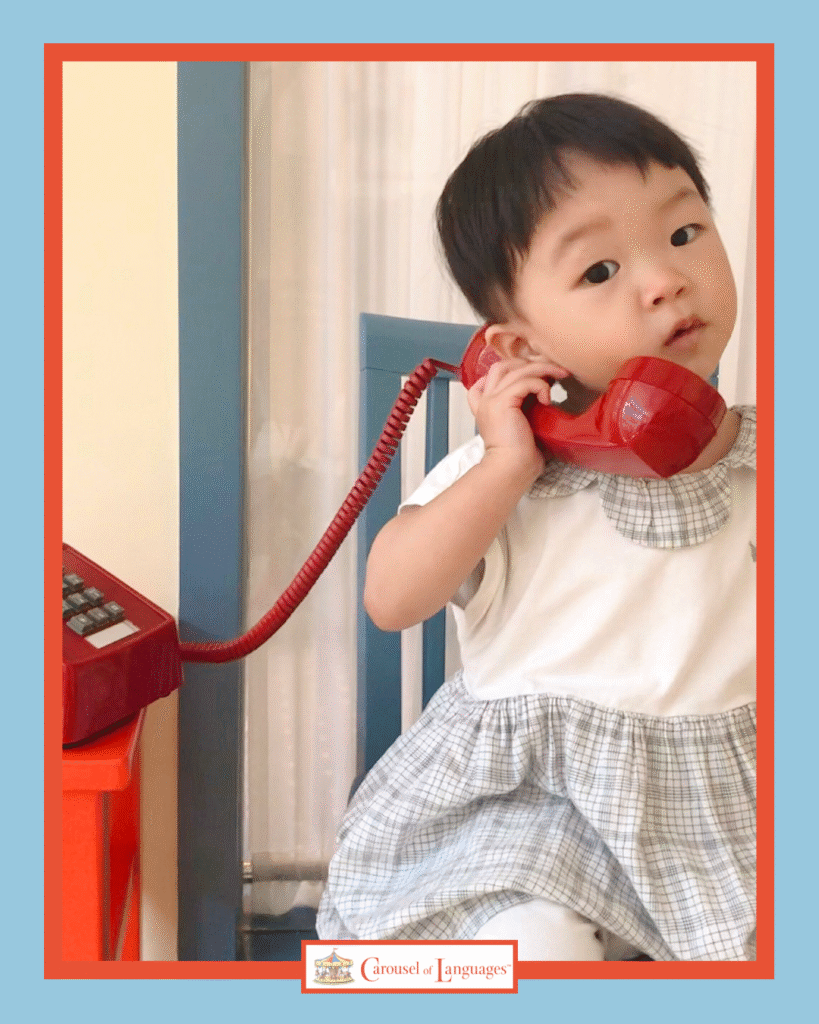
⭐ I want to introduce my child to a second language, but I don’t speak it fluently. Will my child learn “incorrect” pronunciation or accent? Should I speak the target language to my child even if it’s not my mother tongue?
It’s wonderful to speak to your baby or toddler in a foreign language in which you have some education, experience, and confidence — even if you’re not fluent! It’s especially helpful if you know a few simple songs and rhymes to share with your child.
Don’t worry about passing on an “incorrect” accent. Accents evolve throughout childhood and adolescence, especially once children begin interacting with other children and go to school. They will have many language models and acquire the language habits of their community.
⭐ How do you assess a toddler’s language learning and development?
Our highly-trained, finely-attuned teachers evaluate “level” and progress by interacting with the children, following their lead with activities, and assessing many factors, including:
- Is the child using words to communicate?
- Are they regularly using the words they know in the target language?
- Are they using other ways to communicate as well (gazing, pointing, gestures, body movement, changing tones, etc)?
- Can they follow any instructions?
- Do they try to mimic adults or other children?
- Do they make eye contact?
- Are they engaging in activities, playing with a range of toys, and letting others join in?
We believe that, at this tender age, joyful learning is the greatest measure of success.
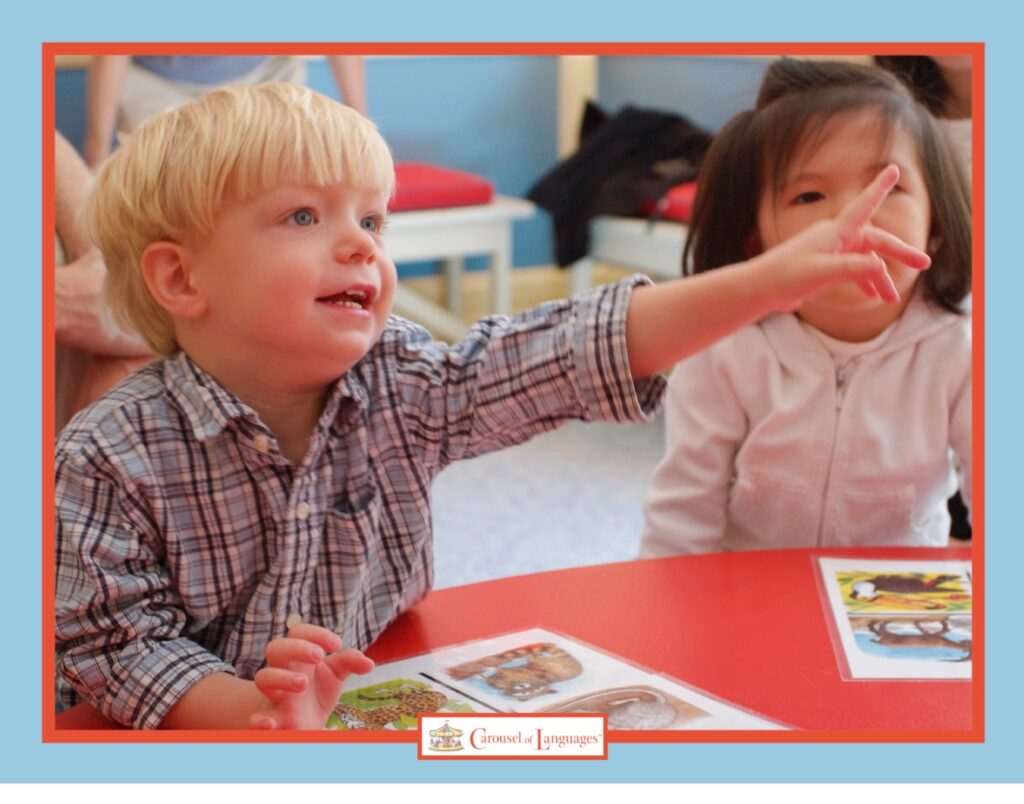
⭐ How much of the second language will my child retain?
Every child is unique in their language development. It’s difficult to quantify or predict exactly how much a child will retain. It depends on many factors, most notably continued exposure.
However, studies have shown that exposure to a foreign language at a young age aids in learning a second or third language in adolescence and adulthood. Familiarity with a second language can also help them “pick it up again” later.
⭐ ⭐ ⭐



